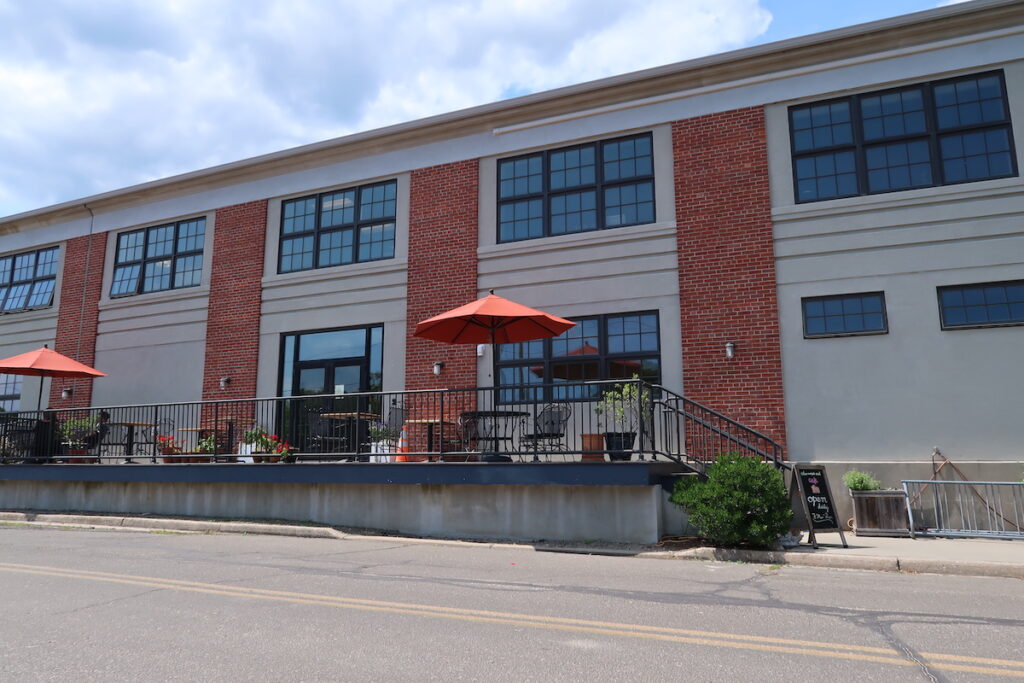Looking to cash in on Halloween? You get one shot a year

For those looking to cash in on Halloween, October flies by. One big misstep and the annual opportunity for generating bucks could vanish like a ghost in the night.
For North Fork farmers, sometimes all they can do is pray for clear skies on October weekends, a crucial handful of days that can make or break their fall money-making season. Other Halloween-reliant businesses — such as Darkside Haunted House in Wading River and Ye Olde Party Shoppe in Southold — may depend less on the weather, but they still have to think creatively to draw crowds each year.
After 14 years of running the ever-popular Darkside Haunted House, Mike Meola said he is now basically in competition with himself. People who have been through a haunted house once usually won’t want to come back — they know the scares and the setup.
“It’s like, been there, done that, let’s try something new,” Mr. Meola said. “But, people who haven’t been here in two years are going to be like, ‘Wow.’ ”
To change things up for returning visitors, Mr. Meola this year created a new path inside that haunted barn along Route 25A. He also expanded and updated a spooky outside section that takes up a small part of Darkside’s four acres. Instead of a walk-through maze outside, Mr. Meola has created small sets that immerse visitors in haunted environments.
The Miller Place native declined to share any figures relating to his business, but he said he has to get enough people in each year, at $20 per ticket, to be able to invest in updating the barn and maze. He also has to pay for costly radio and TV advertisements and meet payroll for his 30 actors and other staff, including makeup artists and builders.
On top of it all, he has to make it worth his time, too, because he gives up his home improvement gig from August to November each year to work solely on Darkside.
“It’s insane, you have to outlay so much money,” Mr. Meola said. “You just hope you get enough people in.”
Ye Olde Party Shoppe owner Michael Liegey nearly has a monopoly on the Southold Town costume business — national chains in neighboring Riverhead are his only competitors. But internet costume sites have forced him to tweak his business. During October he keeps his store open later, until about 8 p.m. on Friday and Saturday and 6 p.m. during the week. He also offers discounts when he can.
Even with the competition, Mr. Liegey does one-third of his entire year’s sales in an approximately month-long period when he opens up his downstairs costume vault and transforms the paper and toy shop into a Halloween roadside attraction. It’s a month that has become a sort of Black Friday for party shops.
He declined to share his annual revenue but said 1,000 people can walk in and out of his store Columbus Day weekend. Another big rush comes on the Saturday before Halloween, when frenzied shoppers searching for costumes swarm his store.
Mr. Liegey’s inventory never goes bad, unlike pumpkins, a notoriously risky crop for Long Island. Ed Harbes III, of Harbes Family Farmstand in Jamesport, said the above-average rain the last two months, coupled with Long Island’s natural humidity, has made it difficult for pumpkins, which like dry conditions.
“Even though it’s a risky crop, it’s an important, well-received crop that has our highest attendance over the course of the year,” said Mr. Harbes, who tends 50 acres of pumpkins.
Pumpkin seeds are usually planted in late June, said Al Krupski, of Krupski’s Pumpkin and Vegetable Farm, who plants 70 acres of farmland in Peconic. If they’re planted too early in June, they’ll rot, but the weather is too dry to plant them in July, he said.
“Planting is a gamble,” Mr. Krupski said.
Aquebogue farmer and greenhouse owner Jim Stakey, of Stakey’s Pumpkin Farm, abandoned growing potatoes in 1977 and cauliflower in 1982 and now has 26 acres of pumpkins. Like Mr. Harbes and Mr. Krupski, he aims to offer visitors pumpkins on the vine . But, if his pumpkins rot out because of the recent long days of rain, he will have to bring in replacements from elsewhere.
“It’s not the same,” Mr. Stakey said. “It’s not what I want to offer my customers.”
Like most crops on Long Island, pumpkins are expensive to grow, coming in at about $2,000 per acre, Mr. Stakey said.
He’s starting the busy season with a price of 59 cents per pound but may have to increase it if the crop rots and he has to ship in replacements. Mr. Harbes’ pumpkins cost 55 cents a pound, while Mr. Krupski sells them at 69 cents per pound.
“Pumpkins aren’t cheap because you have to spray for fungus,” Mr. Stakey said.
This year, Mr. Stakey is adding to his component of what’s come to be known as agri-tainment — the hybrid of pumpkin patches, hayrides, roasted corn snacks and other attractions most North Fork farmers offer — by having renowned Wisconsin-based corn maze designer Scott Skelley put QR codes in his three-acre labyrinth.
QR codes are tiny barcodes visitors can scan with their smartphones. Questions relating to pumpkin farming, U.S. geography and dinosaurs can be pre-selected by teachers or parents before kids enter the maze, Mr. Stakey said.
“It’s just an add-on, but it makes it seem better,” Mr. Stakey said. “I don’t think the real competition is doing this but we’re all in this together and there’s plenty of business out there for everyone.”








